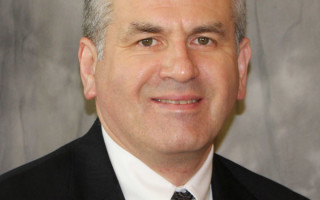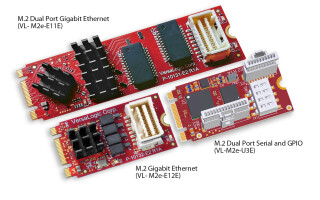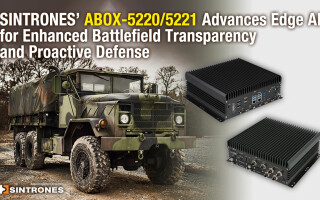More payload interoperability key for UAS platforms
StoryMay 31, 2016

Unmanned aircraft system (UAS) designers are enabling payload interoperability and leveraging COTS avionics, processing, and materials technology to meet demanding military requirements but also to enable applications in agriculture, oil and gas, and fire prevention. In this Q&A with Peter Klein, Director of UAS Programs for the Airborne Business Unit of Elbit Systems of America, he discusses these trends as well as Department of Defense (DoD) funding for unmanned platforms. Edited excerpts follow.
MCHALE REPORT: Please provide a brief description of your responsibility within Elbit Systems of America and your group’s role within the company.
KLEIN: I am the Director, UAS Programs within the Airborne Business Unit of Elbit Systems of America. I am responsible for the development and execution of product development programs for Unmanned Systems for the U.S. military and other government agency (OGA) and for the pursuit and capture of UAS-related contracts within the U.S. Market.
MCHALE REPORT: The DoD released its FY 2017 budget request last month with a slight increase in overall funding, with funding for some unmanned platforms trending down. How do you view the DoD funding outlook for unmanned aircraft -- short term and long term?
KLEIN: It is flat due to reprioritization within the DoD and related entities as they shift their acquisition strategy to reflect the changes in the industry.
MCHALE REPORT: AUVSI’s unmanned systems show, now called Xponential, first appeared the buzz was around the platforms themselves. Now it revolves around the payloads and ISR sensors, which depend on intensive COTS components. What is your approach to using COTS technology?
KLEIN: End users are definitely looking more at COTS as an option, especially with the push toward more interoperability in payloads. The challenge is whether the COTS standard satisfies military requirements for specific programs. It will vary depending on the application and how it helps solve the cost equation and delivers the durability and reliability necessary for military environments.
But COTS does force a focus the issue and the industry needs to take responsibility for interoperability, having learned lessons the hard way with working with systems that were not interoperable.
The future will be about plug and play payloads so multiple missions can be performed with one airplane configuration by swapping out the payloads in way that takes no longer than a few minutes. It also makes it easier and more efficient for joint missions between DoD and other agencies. The payload will be platform independent in many ways.
MCHALE REPORT: Please provide an example of current unmanned military platforms Elbit Systems builds.
KLEIN: We have leveraged IR&D [internal, research, and development] funding and the design of the Skylark Small UAS (SUAS) to create the Skylark Block 2 for the U.S. market. We have used the Skylark Block 2 to test avionics and payloads solutions that meet U.S. requirements. We have now incorporated new design changes and new avionics into the air vehicle to expand the utility of the aircraft for multiple markets.
To penetrate the U.S. market you must do your own IR&D and build an airplane that is flexible enough to meet potential customer requirements with the most important being interoperability. In that regard our aircraft has a universal payload mount to enable payloads to be swapped out easily. UAVs are being viewed more as a tool to accomplish a task. I’ve had conversations with folks and funded a market survey on just this topic and we’ve used that feedback and allocated IR&D to adjust our design to meet the market demand for a reliable, rugged, flexible, and easy to use system.
When you look around the floor at Xponential, the fixed-wing airplanes are designed around a small number of payloads. The vertical take-off and landing (VTOL) models carry a variety of payloads. Our approach is to enable our fixed wing UAV to also carry a variety of payloads. Our interface will enable our aircraft to carry any vertical mount payload that meets our space, weight, and power requirements. We have shifted the decision on the payload to be used to the operator. Interoperability and utility can give customers the capability to use one airplane and define configurations, giving them zero roadblocks when they deploy for multiple missions with one platform.
MCHALE REPORT: What went into the design of your universal interface?
KLEIN: We placed an emphasis on leveraging proven COTS products to provide a user-friendly human machine interface that minimizes training time. We also applied COTS materials and 3D printing in its construction. The whole universal payload mount is a 3D printed structure and composite waterproof material is used within the creation of the payload pod.
Some of the payloads coming out now carry their own power source, so power does not have to be supplied to the payload. Reducing the power drain on the air vehicle battery allows us to extend our endurance. We provide 2 to 2.5 hour endurance with a standard configuration, but that number will now change based on payload weight and power demand. It depends on what the customer wants to carry.
MCHALE REPORT: The dark side of COTS is always obsolescence. How do you manage that in your systems?
KLEIN: Shifting to COTS makes it easier to handle obsolescence. We can easily adapt to whatever the industry provides in response to technology improvements. It used to be when you designed the airplane what was state of the art was old and obsolete by the time it deployed.
MCHALE REPORT: How are you working with the safety certification requirements for unmanned aircraft that will fly in the National Airspace?
KLEIN: Regarding safety certification, there is a need for standardization, but that is not here yet. Until the standards arrive companies will use proven engineering principles. We’ve really focused on certification with the Federal Aviation Administration (FAA) once the FAA opened the skies for small fixed wing UAS.
We will put our airplane through air-worthiness testing at New Mexico State University. The use of proven COTS equipment will shift the focus of the evaluation to how the airplane is built and how the COTS equipment has been implemented.
MCHALE REPORT: What commercial markets will use unmanned technology?
KLEIN: We see opportunities with the agriculture market, energy, oil and gas, and fire detection applications. Capabilities that we can provide to these markets is the ability to allow the operator to fly multiple sensors during one deployment as needed and to even drop sensors into remote locations without affecting the flight capability of the airplane.
Another capability that would be useful for commercial applications is for the aircraft to break the barrier for beyond line of sight operations. Small fixed wing UAS can be used to establish regulations and requirements that will be applicable for larger UAS in the future. It all comes down to regulation and standard development for each class of UAS. More standardization is necessary for the capability to thrive in multiple commercial markets.
MCHALE REPORT: Looking forward, what disruptive technology/innovation will be a game changer for unmanned aircraft designs and/or payloads? Predict the future.
KLEIN: Aircraft design and payload development will continue to advance through the continuous improvements in material science, processing capability, and sensors.
The integration of higher levels of autonomous behavior into unmanned aircraft will promote increases in safety, efficiency, effectiveness, and reliability by allowing the aircraft to participate in the decision-making process with the human operator. Obstacle and traffic avoidance, flight management, and data collection can be improved when the aircraft will be able to process and make decisions during the flight.
Peter Klein, Director of UAS programs within the Airborne Business Unit of Elbit Systems of America, has more than 34 years of aerospace-related program experience in program management, technical leadership, and engineering.






